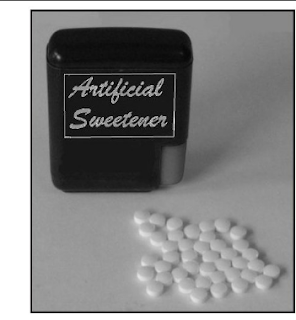Batrachospermum Occurrence:- (1) Batrachospermum is fresh water alga. (2) It is found in clear, cool, and running streams. (3) Deepwater plants are dark violet or reddish in color. But the shallow-water species are olive green. (4) The intensity of light changes the color of pigments. (5) The thallus is attached to the substratum. Vegetative structure (1) The thallus of an adult plant is soft, thick, filamentous. (2) It is freely branched and gelatinous. (3) The central axis is made up of a single row of large cells. Whorls of branches of limited growth are developed on this axis. (4) These branches are filamentous and dichotomously arranged. (5) The main axis is corticated. It consists of a row of elongated cylindrical cells....
Chemistry in everyday life
Medicines or Drugs :-
The chemical substances helping of human body or an animal either from tratment of disease or to reduce suffering from pains,are called Medicines or Drugs .
Chemotherpy :-
The branch of science which deals with the study of tratment of disease using medicines ,is known as chemotherpy :- e.g. Cancer tratment.Classification of Medicines :-
Antiseptics :-
The medicines which are used to bring down the body temperature during high fever .e.g. Paracetamol,Novalgin,Quninoe,Aspirin,etc. |
| Aspirin |
NOte :- Paracetamol is prefered over aspirin as an antipyretics beacause aspirine gets hydrolysed in the stomach to salicyclic acid,which causes "Ulcer" in stomach from where bleeding may take place.
 |
| Paracetamol |
Antimalarials :-
The medicines which are used to bring down the body temperature during malaria fever . e.g. Qunine,chloroquine,paraquine ,etc.Analgesics :-
The medicines which are used for getting relief from the pains.These are if two types :-
Narcotics :-
The analgesic drugs which produce sleep and unconsiousness are called narcotics.These are opium products. e.g. Morphine,codeine,morphine diacetate(heroine).
Non-narcotics :-
The analgesic drugs which are used foe getting relief from the pains ,which do not produce sleep and unconsciousnes,are called non-narcotics. e.g.:- Brufen,Ibuprofen,butazolidine,etc.NOTE:- Aspirin,Novalgin,Phenacetin act both antipyretics as well as analgesics.
Antiseptics :-
The chemical which kills or prevent the growth of microorganism from living surface. e.g. Dettol,Bithional,2-3% of iodine solution of alcoholic water (Ticture of iodone),0.2% of phenol solution,Methylene blue solution,etc.Disinfectants :-
The chemicals which kills or prevents the growth of micro-organisms (bacteria)from non-living surface,is known as disinfectants. e.g. :-1% of phenol solution.These are harmful for living tissues and cannot be safety applied on wounds,cuts,etc.
Tranqulizers or Psychotherapeutic drug:-
The medicines which are used to sure mental disease .These are used to release mental tension,reduce anxiety and make the patient passive.
These are the constituents of sleeping pills.
These help the patient to restore confidance and the patient works with full confidance,
These are of two types :-
Hypotonics :-
These are the tranqulizers which are used to reduce mental tension &anxiety,These induce sleep.e.g. Barbituric acid,luminal,Amytal,veronal,nembutal,etc.
Non-hypertonic :-
These are the tranqulizers which are used to reduce mental tension and anxiety.These do not induce sleep.Antidepressants:-
These drugs are given to the patients with shattered confidence,These produce feeling of well being and confidence in the patient, These are also known as Mood Booster drugs. e.g. Vitalin,coacin,Methedrine,etc.Antibiotics :-
These are the medicines which are produced from micro-organism (Bacteria,fungi,etc.)and can inhibit the growth or kill the microorganisms .The first antibiotics penicillin was discovering by Alexander flemming in 1929. e.g. Penicilin,steptomycillin,ampicilling ,etc.
Broad -spectra Antibiotics :-
The antibiotics which are used to cure a variety of disease .These can be used to cure typhoid,acute fever,dysnetary,whooping cough,pneumonia,eye-infection,urine,infection,etc.e.g. Tetracycline,chloromycetin,etc.
Narrow spectrum Antibiotics :-
The anti-biotics which are used to cure a single disease .Sulpha Drugs :-
The antibiotics having sulphur salts ehich protect the body against micro-organisms.These are used agains pneumonia,tuberculosis,etc.
Germicides :- The medicines which are used to kill germs,fungi,etc.
e.g. :- phenol,D.D.T.,1% cl2 solution,Bleching powder,Hydrogen peroxides,cresols formaldehyde.etc.
Antifertility :-
The medicines which are used to check pregenancy in women are called antifertility drugs or Birth control drugs or oral-contaceptive. e.g. Norethindrone,Novestrol,etc.These drugs are mixture of oestrogen and progestron derivatives.
Antihistamines :-
The drugs which are used against allergy .These are so called,because they check the production of histamnes .These are used for the tratment of hay-fever,conjuctivites,nasal discharge irritation.
Antacids :-
The medicines which are used to cure gastric acidity by neutralizing acid .These usually contain of aluminium Al,Mg NO,etcSystematic antacid :-
These decrease the acidity ,but systematic alkalosis due to absorption of bicarbonate from anacid .As a result of it acid-base balance is distrubes in the body.Excess sodium may cause odema,cardian failure,reneal failure,etc.Non-sytematic anacid :-
These are not absorbed after administrator .Hence acid-base balance is minimum disturbed in the body.Artificial Sweetness :-
The substances which givesweet taste in food and provide colours,but do not add any calorie to our body,These are also known as Calorie free sweetness or low calorie sweetness,e.g. Saccharin,Aspartame,etc.
Preservation :-
The substances which are added to food to prevent their spoilage and to retain their neutiritives for long period are called preservatives e.g. Nacl,oil,sodium benzoite,etc. |
| Artificial sugar |
Aspertame is 180 time more sweet than cane sugar
Ducline is 500 times more sweet than cane sugar
Saccharin is 550 time is more aweet than cane sugar.
Sucaralose id 650 time more sweet than cane sugar.
Alitame is 2000 time more sweet than cane suagr.
Comments
Post a Comment
Thanks